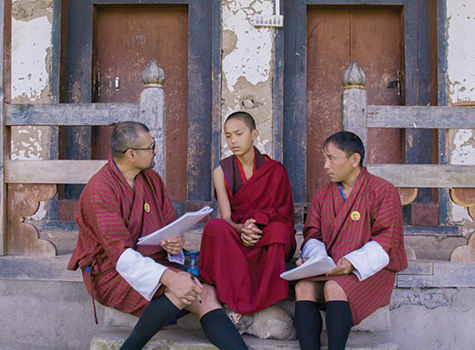I have written about classical dances, folk dances, community dances, funeral dances, and many others. As Indian culture is ancient, it is amazing to see how dancing played a major role in the daily lives of people for thousands of years.
I thought I should write about unique recreational dances of Jammu and Kashmir. Sometimes, these recreational dances overlap a little with the folk dances of India and there are countless forms of these dances across the country. The performance of these dances brings joy to people performing and to the audience alike. Many of these dances are performed during a particular season or a festival or on a special occasion similar to folk dances.
I would like to share some of the dance styles, which I have not covered before.
Rouf:
In the Kashmir valley, two kinds of joyous dance styles are performed, especially during spring season. Rouf dance is performed only by girls. The dancers sing mostly love songs while dancing. In Rouf, the girls stand in two rows facing each other. The dancers of each row interlock themselves by putting their hands at the back of the other dancers on both sides, creating a beautiful chain. The stepping and dance movements are very simple. On the rhythmic beats, they step forward and then go back one-step. Sometimes, they crisscross their steps along with their hands. Their torsos gracefully bend forward and back in beat with their steps.

As I am writing this, it reminds me of the Greek Festival that we have been attending in Charlotte, NC for years. During their dances, the all girls’ groups start their dances in a line and then form a circle while stepping in a similar fashion.
Hikat:
Unlike Rouf, Hikat is generally performed by both boys and girls and they become dancing partners. However, they hold each other with extended hands, sometimes crisscrossing them as well. Dancers sing to the musical accompaniments of usually Rubab, a string instrument. Rubab is a lute-like musical instrument originating from central Afghanistan. The Rubab is mainly used by Pashtun, Tajik, Turkish, Kashmiri, Baluch, Azerbaijani, and Iranian Kurdish classical musicians. Rubab is accompanied by a drum called Tumbaknari, a unique native drum of Kashmir. This dance can be very high energy as the musicians may increase their speeds to challenge the dancers.
Jabro:
Another joyful dance called Jabro is prevalent in Ladakh region of Jammu and Kashmir. This is more prevalent in the Changthang area situated at a very high altitude. The people who live in this area are mostly Nomads. Their main source of livelihood is livestock, such as Yak, Sheep and goat. This dance Jabro is very popular among these people.
It has now become popular in other parts of Ladakh as well. Here, both men and women participate in the dance. It begins with a slower tempo, which increases as the dance progresses. Jabro could be danced for a long time, especially during moonlit nights. The musical accompaniment is provided by Damnyan, a string instrument similar to Rubab. It is made of wood, animal skin and strings. This area is now becoming very popular due to tourism. Centuries-old cultural and social fabrics are now changing rapidly, influenced by modern lifestyles.
Naati:
In Himachal Pradesh, a neighboring state of Kashmir, a variety of Naati dances are performed. There are around 13 different kinds of Naati. For special occasions, three kinds of Naati dances are performed known as Dhili, Pheti, and Bashari. Both men and women participate in these dances. The Naati female dancers wear Thipu, a square red scarf tied on the head; a Kurti, usually made of velvet; Pattu, the main upper garment beautifully embroidered; Suthan, a trouser made of colorful printed cloth; Puhla, shoes made of fiber.
The dance is performed in a group and the people of the Kullu district dance with great enthusiasm and zeal. As a part of the dance, the participants link their hands and move in step to different rhythms. They fiercely dance to the rhythmic and melodious self-composed songs. The songs are sung in the local dialects. The Naati dance helps the performers to relieve them of the strains and stress of daily mundane life. This colorful and attractive dance form fills the air with joy and excitement. Naati dance is usually performed to the accompaniment of Shehnai, Dhol, Nagara, Karnal and Narsingha.
The society of the tribal encourages all its members irrespective of age and gender to participate in the Naati dance. However, as the dance requires lots of energy it is usually performed by the younger generations. Interestingly, in the earlier days, it was danced only by the men wearing swirling tunics, churidars, sashes and decorated caps for hours at a time. Over the years, it has undergone modifications so that women too can participate in it. As you can see, these recreational dances are very inclusive and meant to bring people together in a community to engage, celebrate, and support each other.
———-
For questions or comments contact Maha via e-mail at: [email protected]
Posted: Monday, October 8, 2018



